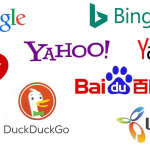I’m torn about digital grocery shopping. While I appreciate the convenience of having my groceries delivered or picking them up at the store, I seem to get an inconsistent product selection, especially meat, fruits, and vegetables. As a result, my deliveries and pickups often exclude anything but dry goods and drinks. I’m not sure how this issue will be resolved technologically, but I think shopping live, where the products you select can be added to your order, would be a game-changer.
My other pain point is self-checkout. Inherently, it’s a solution that saves a ton of labor but insists on technology that assumes you’re likely a thief. I’m not sure that’s the user experience (UX) that grocery chains want to provide their loyal and honest customers. Waiting for every dozen scans for a service person to count my items or review a live video of me possibly stealing is degrading and irritating.
The evolution of mobile applications has been positive. My local store has NFC, so my loyalty card pops up as soon as I walk into the store. Not to mention that I can search for any item within the store and have a location and map displayed on how to get there. This is especially useful given my local store changed its layout after a decade… grrr.
Including above, here’s just a few of the technological advancements happening in grocery shopping:
- AR product visualization: Use of augmented reality (AR) to preview products in-home before purchase.
- Automated warehouses: Use of robotics and AI in fulfillment centers to speed up order processing.
- Blockchain for supply chain: Improved traceability and transparency in food sourcing.
- Cashierless stores: Development of grab-and-go stores using computer vision and sensor fusion.
- Click-and-collect / BOPIS: Widespread adoption of buy online, pick up in-store services.
- Contactless payments: Increased use of NFC technology for touch-free transactions.
- Drone delivery: Experimental use of drones for last-mile grocery delivery in some areas.
- Dynamic pricing: Real-time price adjustments based on demand, inventory levels, and other factors.
- GPS-based services: Location-based notifications for nearby deals or reminders when passing a store.
- In-store navigation: Mobile apps that guide shoppers to specific products within stores.
- Mobile grocery apps: Development of user-friendly apps for ordering groceries on smartphones.
- Personalized nutrition apps: Integration of health data with grocery recommendations.
- Predictive analytics: Use of AI to forecast inventory needs and personalize shopping experiences.
- QR code scanning: Implementation of QR codes for product information, deals, and contactless payments.
- Same-day delivery: Rapid expansion of same-day and even 1-2 hour delivery options in many urban areas.
- Smart shelves: Implementation of digital price tags and inventory tracking systems.
- Smart shopping carts: Introduction of AI-powered carts that can scan items and process payments.
- Subscription-based grocery services: Growth of regular, automated delivery of staple items.
- Virtual shopping assistants: AI-powered chatbots to help with product selection and answer questions.
- Voice ordering: Integration of grocery shopping with smart home devices like Amazon Alexa or Google Home.
These technological advancements have significantly transformed the grocery shopping experience, making it more convenient, personalized, and efficient for consumers while presenting new opportunities and challenges for retailers.
Undoubtedly, the grocery industry has undergone a significant digital transformation (DX), driven by changing consumer preferences, accelerated by the pandemic response, and through growing technological advancements. This shift is reshaping how people shop for food and household essentials, creating challenges and opportunities for retailers. Let’s explore the key trends and implications of this digital grocery revolution.
The Rise of Online Grocery Shopping
Recent data reveals a dramatic surge in online grocery shopping:
- 76% of surveyed shoppers have purchased groceries online for home delivery or buy online, pick up in-store (BOPIS) options
- 49% feel that shopping online for groceries helps save time
- 43% are uncomfortable shopping in crowds, likely influenced by recent global events
These statistics underscore a significant behavioral shift, with consumers increasingly valuing convenience, time-savings, and safety in their grocery shopping experiences.
Evolving Consumer Preferences
The modern grocery shopper is more discerning and value-conscious than ever before:
- Budget-consciousness:
- 57% have purchased store brands due to lower prices
- 55% consolidate purchases into larger orders to minimize delivery fees
- 47% have increased their use of coupons and discount services
- Health and sustainability focus:
- 48% choose products that are sustainably sourced and environmentally friendly
- 36% prefer retailers offering more organic food choices
These trends highlight the importance of grocers offering diverse products, including budget-friendly options and sustainably sourced items, to meet evolving consumer demands.
The Critical Role of Payment Options
Payment flexibility has become a crucial factor in the online grocery shopping experience. One in five surveyed shoppers attempted to make online grocery purchases but encountered issues with their preferred payment method not being accepted
The top three payment methods for online groceries are:
- Credit cards (61%)
- Debit cards (44%)
- PayPal (16%, used approximately four times more than Apple Pay)
Offering various payment options, including digital wallets like PayPal, can help reduce cart abandonment and increase conversion rates for online grocers. 93% of those who used online payments plan to continue doing so in the future
Overcoming Barriers to Online Grocery Adoption
To unlock the full potential of e-commerce growth in the grocery sector, retailers must address key concerns:
- 79% of those who don’t shop for groceries online cite high delivery fees as a barrier
- 52% worry about the security of online payments and sharing financial information
Grocers can attract more customers to their online platforms by offering competitive delivery pricing and implementing robust security measures.
Implications for Grocery Retailers
To thrive in this evolving landscape, grocery retailers should consider the following strategies:
- Invest in user-friendly e-commerce platforms and mobile apps
- Offer a wide range of products, including budget-friendly and sustainable options
- Implement flexible payment options, including popular digital wallets
- Optimize delivery and BOPIS services to enhance convenience
- Prioritize data security and communicate safety measures to build trust
- Leverage data analytics to personalize the shopping experience and optimize inventory management
The digital transformation of grocery shopping represents a significant shift in consumer behavior and expectations. By embracing this change and adapting their strategies, grocery retailers can position themselves for success in the digital age. Those who prioritize convenience, affordability, and security while offering a diverse product range and flexible payment options will be best equipped to meet the needs of today’s tech-savvy and value-conscious grocery shoppers.

©2024 DK New Media, LLC, All rights reserved.
Originally Published on Martech Zone: The Digital Transformation of Grocery Shopping: A New Era for Consumers and Retailers














